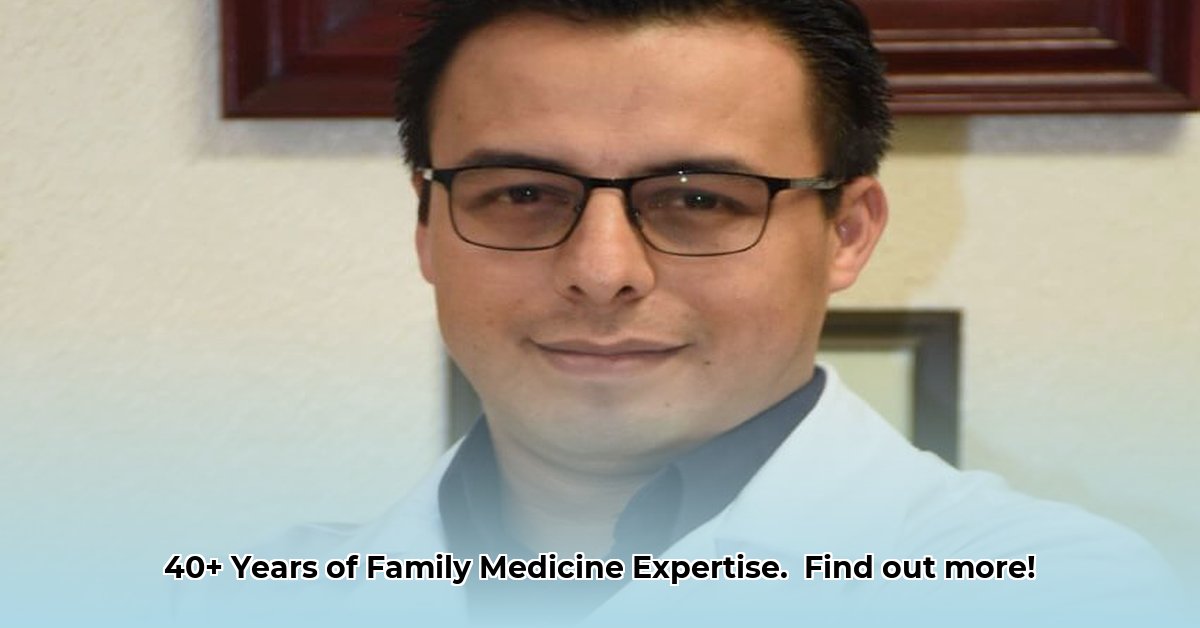
Dr. Alfonso Ochoa's Weslaco Practice: A Data-Driven Analysis
Dr. Alfonso Ochoa has provided family medicine services in Weslaco, Texas for over 40 years. This article analyzes his practice using available data, focusing on treatment frequency, Medicare participation, and the need for more granular data on patient outcomes to provide a comprehensive assessment. We will explore areas of strength, identify limitations in current data, and propose strategies for future improvements in patient care and accessibility. For comparison, see data on another Texas physician here.
Treatment Frequency and Service Breadth
Dr. Ochoa's practice demonstrates a high volume of treatments for common ailments, such as upper respiratory infections and shingles, significantly exceeding the average for comparable practices in the area. This suggests a substantial patient base and potential expertise in managing these prevalent conditions. His practice also offers a broad range of services, encompassing over 200 different procedures and conditions. This breadth of services indicates a commitment to comprehensive care. However, the sheer volume of treatments, while impressive, lacks the context provided by detailed outcome data. To fully understand his effectiveness, additional metrics such as recovery rates, patient satisfaction scores, and treatment success rates are needed. How can we best utilize this high volume of patient encounters to gather more robust outcome data?
Medicare Participation and Accessibility
Dr. Ochoa's participation in Medicare and the Physician Quality Reporting System (PQRS) indicates a commitment to serving a wide patient population and to improving the quality of care through data reporting. His practice also offers a comprehensive range of tests, from basic blood work to COVID-19 testing, further supporting this commitment to thorough diagnosis and treatment. His high frequency of annual wellness visits underscores a proactive approach to healthcare. However, while participation in these programs is positive, a deeper analysis is needed to determine the degree to which these initiatives have actually improved health outcomes for his patients. What specific improvements have been achieved through Medicare participation and PQRS engagement? Further research should also investigate potential disparities in access to his services for different demographic groups within the Weslaco community.
Data Gaps and Future Research Needs
The available data highlights a significant gap: the lack of detailed patient outcome data. Without such data, it's difficult to objectively assess the quality and effectiveness of Dr. Ochoa's treatments. Additionally, comprehensive demographic data on his patient population is needed to understand if there are disparities in healthcare access or outcomes for specific groups. Finally, data on the utilization and impact of telehealth services offered by Dr. Ochoa's practice would provide valuable insights into the accessibility and effectiveness of this evolving aspect of healthcare delivery. What are the most effective strategies for collecting and analyzing patient outcome data within this context?
Improving Data Collection and Transparency
To enhance the understanding of Dr. Ochoa's practice and the quality of care provided, several improvements in data collection and reporting are recommended:
- Implement Standardized Outcome Measures: Adopt standardized, validated outcome measures for common conditions treated. This will allow for consistent, comparable data collection over time.
- Patient Satisfaction Surveys: Regularly administer patient satisfaction surveys using validated questionnaires to gather feedback on various aspects of the patient experience.
- Demographic Data Collection: Systematically collect demographic information on patients to assess potential disparities in access to care and outcomes.
- Telehealth Utilization Tracking: Track the utilization rates of telehealth services and their impact on patient access, engagement, and outcomes.
- Data Visualization and Reporting: Utilize data visualization techniques to present key findings in an accessible and informative manner.
Conclusion
Dr. Alfonso Ochoa's long career demonstrates a significant commitment to the Weslaco community. However, a more data-driven approach is crucial for evaluating the quality and effectiveness of his practice and for identifying areas for improvement. By addressing the identified data gaps and implementing the recommended changes, Dr. Ochoa and his practice can enhance transparency, improve patient care, and strengthen community trust. The pursuit of ongoing data collection and analysis is essential for ensuring high-quality, accessible, and equitable healthcare for all members of the Weslaco community.